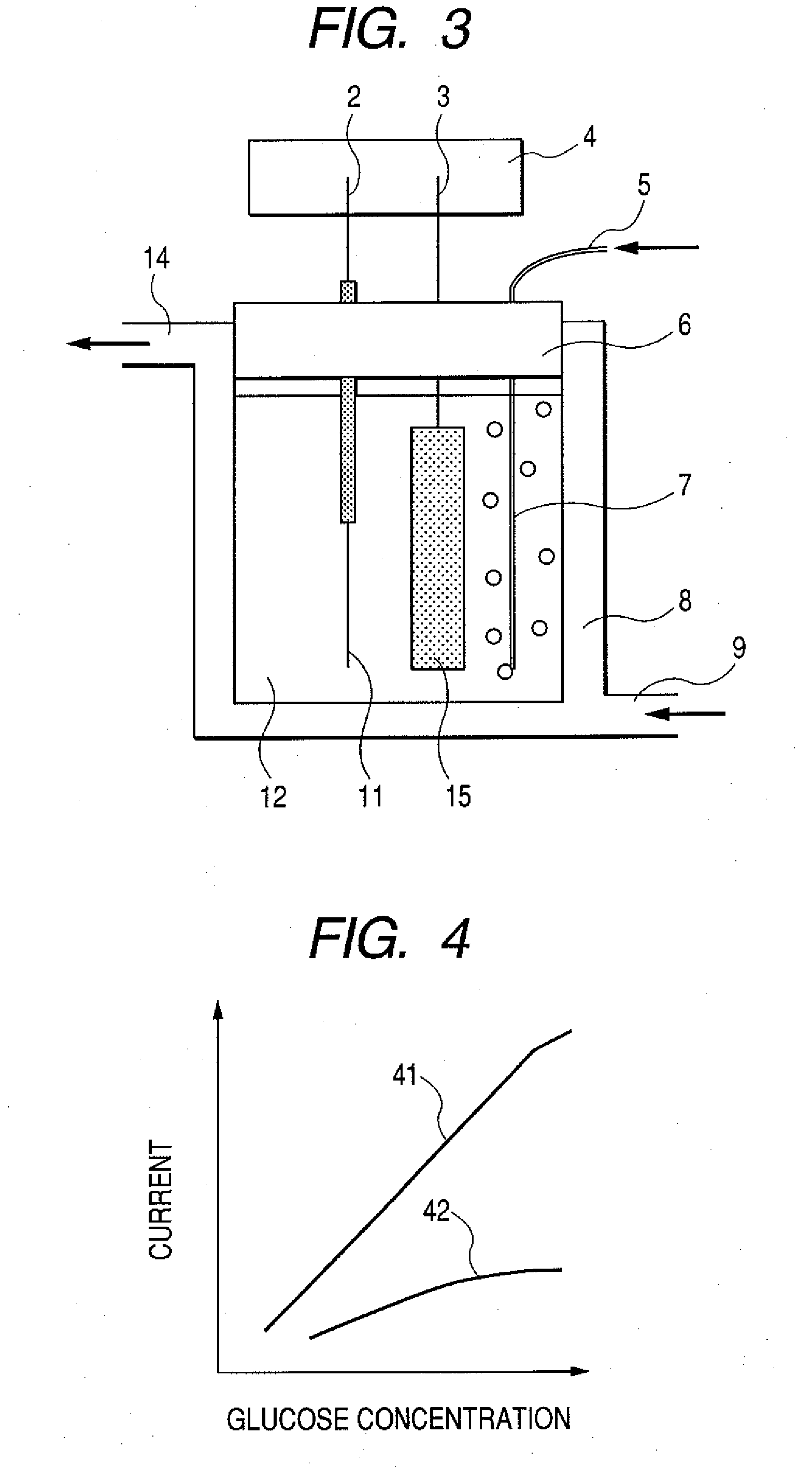Enzyme electrode, and sensor and biofuel cell using the same
a technology of enzyme electrodes and electrodes, which is applied in the field of enzyme electrodes, can solve the problems of not providing a high current value and reducing the activity of enzymes, and achieve the effects of increasing catalytic current, improving characteristics, and increasing electron transportation speed
- Summary
- Abstract
- Description
- Claims
- Application Information
AI Technical Summary
Benefits of technology
Problems solved by technology
Method used
Image
Examples
preparation example 1
[0061] A method for synthesizing the ligand shown in the following Formula (1) will be now described.
[0062] 1.5 M NaOH solution was added to an ethanol solution of equimolar 2-acetylpyridine and 4-emthylthiobenzaldehyde, followed by stirring in a room temperature and filtrating a product. The filtered product was washed by methanol and dried to obtain a white solid. 2-acetylpyridine and potassium-tert-butoxide were stirred in a nitrogen stream, followed by adding thereto the above prepared white solid and continuing the stirring. Then, an excess of acetic ammonium and ethanol were added to the mixture, followed by refluxing the mixture. After cooling the resulting reaction solution, the solvent was removed by vacuum distillation. The residue was washed by water and methanol to obtain a pale yellow solid. The pale yellow solid and 10 mol equivalent of sodium ethanethiolate were added to a DMF solvent in nitrogen atmosphere, and the mixture was refluxed. After removing the solvent b...
preparation example 2
[0063] A method for synthesizing the ligand shown in the following Formula (2) will be now described.
[0064] 4′-chloro-2′,2″:6′,2″-terpyridene and 10 mol equivalent sodium ethanethiolate was added to a DMF solvent in a nitrogen atmosphere, followed by refluxing the mixture and removing the solvent by vacuum distillation. An aqueous solution of ammonium chloride was added to the resulting mixture, followed by stirring. The resulting solution was added to an aqueous solution of sodium hydroxide and the resulting white precipitate was recovered to obtain a compound of Formula (2).
preparation example 3
[0065] A method for synthesizing the ligand shown in the following Formula (3) will be now described.
[0066] Charge 1 equivalent of 4-aminobenzaldehyde, 2 equivalents of 2-acetylpyridine, ammonium acetate and acetamide, and reflux the mixture in the air atmosphere for three hours. Cool the reacted solution in the air, add 50 g of aqueous sodium hydroxide solution to the cooled solution, and reflux the liquid. Cool the reacted solution in the air, wash an oily solid with water. Dissolve the residue into a heated hydrobromic acid. Filter the produced umber precipitate, add it into 300 mL of water, and add sodium hydrogen carbonate to render it basic. Extract a product from the resulting solution with chloroform, pass the liquid through a column, and carry out the recrystallization to obtain 4′-(4-anilino)-2,2′:6′,2″-terpyridine.
[0067] Add 4′-(4-anilino)-2,2′:6′,2″-terpyridine and ammonium chloride to water as a solvent. Add thereto zinc powder while vigorously stirring it with a sti...
PUM
| Property | Measurement | Unit |
|---|---|---|
| Speed | aaaaa | aaaaa |
| Electrical conductor | aaaaa | aaaaa |
Abstract
Description
Claims
Application Information
 Login to View More
Login to View More - R&D
- Intellectual Property
- Life Sciences
- Materials
- Tech Scout
- Unparalleled Data Quality
- Higher Quality Content
- 60% Fewer Hallucinations
Browse by: Latest US Patents, China's latest patents, Technical Efficacy Thesaurus, Application Domain, Technology Topic, Popular Technical Reports.
© 2025 PatSnap. All rights reserved.Legal|Privacy policy|Modern Slavery Act Transparency Statement|Sitemap|About US| Contact US: help@patsnap.com



